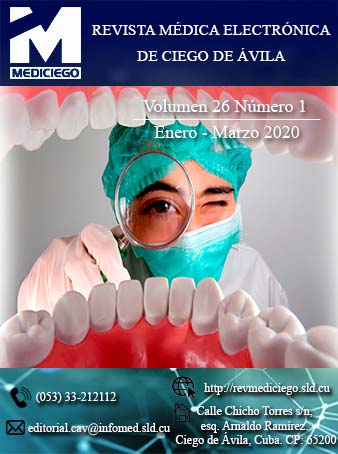Fluid administration in critically ill patients
Abstract
Introduction: the administration of fluids constitutes one of the fundamental pillars in the treatment of seriously ill patients; only 50 % respond to this procedure and there is an inconsistency between macro and microhemodynamic variables, which makes monitoring more complex. Current research focuses on multiple monitoring variables and various strategies for fluid administration in the critically ill patient.
Objective: to update the evidence on the administration of fluids in the seriously ill patient.
Methods: the studies published in the PubMed, SciELO Cuba, Cumed databases and in the Google Academic search engine were reviewed. The papers published in the last five years, in English and Spanish languages, were selected.
Development: evidences related to the variables of monitoring for the administration of fluids, and strategies for its maintenance are presented. In this regard, the authors present their critical considerations.
Conclusions: there is a consensus that the initial administration of fluids in patients in shock should be early and aggressive to restore blood volume. Fluid administration needs monitoring variables to effectively define the patient who benefits from its use, taking into account that the signs of the physical examination, the most common physiological variables, and the radiographic study are not very effective in guiding their contribution. Despite the evidence that fluid overload worsens the patient's prognosis, there is still no consensus regarding volume maintenance in critically ill patients. Therefore, new studies are required to address this issueDownloads
Published
How to Cite
Issue
Section
License
Copyright (c) 2021 Iván Moyano Alfonso, Alejandro González Alvarez, Julio Antonio Fernández Hernández

This work is licensed under a Creative Commons Attribution-NonCommercial 4.0 International License.
Those authors who have publications with this journal accept the following terms of the License CC Attribution-NonCommercial 4.0 International (CC BY-NC 4.0):
You are free to:
- Share — copy and redistribute the material in any medium or format for any purpose, even commercially.
- Adapt — remix, transform, and build upon the material for any purpose, even commercially.
The licensor cannot revoke these freedoms as long as you follow the license terms.
Under the following terms:
- Attribution — You must give appropriate credit , provide a link to the license, and indicate if changes were made . You may do so in any reasonable manner, but not in any way that suggests the licensor endorses you or your use
- No additional restrictions — You may not apply legal terms or technological measures that legally restrict others from doing anything the license permits.
The journal is not responsible for the opinions and concepts expressed in the works, which are the exclusive responsibility of the authors. The Editor, with the assistance of the Editorial Committee, reserves the right to suggest or request advisable or necessary modifications. Original scientific works are accepted for publication, as are the results of research of interest that have not been published or sent to another journal for the same purpose.
The mention of trademarks of specific equipment, instruments or materials is for identification purposes, and there is no promotional commitment in relation to them, neither by the authors nor by the editor.






















